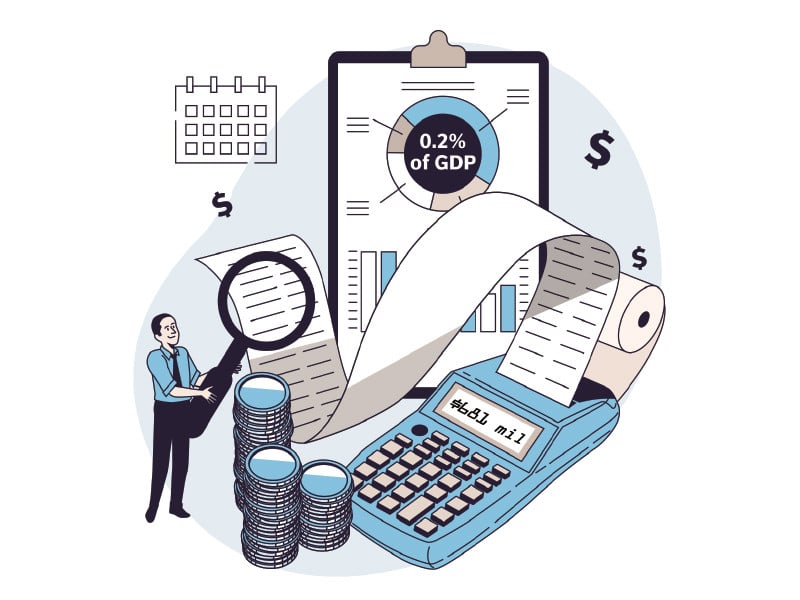By Stephanie von Friedeburg
Published in DAWN on December 14, 2021
PAKISTAN has enormous potential. Its sizeable under-30 population can unleash a major demographic dividend. The country’s location at the crossroads of Asia makes it a logical fit to be a regional economic leader. Pakistan’s private sector is eager and well-placed to flourish in the large domestic market.
But there is a flipside. Demographics don’t yield dividends if there are no jobs for young people. A desirable location is of little value if the infrastructure and capacity isn’t there to capitalise on it. A willing private sector is undermined if captured by elites and hindered by onerous regulations and taxes.
Adding to these pitfalls are the ever-growing threat of climate change and minimal physical capacity to bring energy into homes and businesses.
The government’s means to financially navigate these issues is limited. Seventy-two per cent of the federal budget goes to only three things: pensions, debt servicing and defence spending. That’s why private investment needs to be stepped up dramatically. Private sector capital is deeper than any public purse.
Right now, private investment represents only 10pc of GDP.
Right now, private investment represents only 10pc of GDP. To become a middle-income country, that figure should be 25-30pc.
But private finance needs to be lured. To do so, Pakistan must improve three things: economic competitiveness, access to finance and infrastructure.
The country can start small, literally. Small and medium enterprises are the backbone of the private sector.
Being more competitive means being less complex. In Pakistan, there are over 1,500 regulations and a tax regime that militate against businesses. The result is low productivity and manufacturing complexity. It’s why Pakistan ranks 110 out of 141 countries on the Global Competitiveness index.
The government can remove red tape by simplifying, automating and integrating regulatory processes. This will even the playing field and reduce corruption.
Making sure everyone benefits is key. Pakistan’s female labour-force participation is 25pc. There is no path to sustainable growth with almost half the team sitting on the bench.
Improving competitiveness also means removing barriers to exports. The current consumption-led growth model whiplashes the country through booms and busts. By pruning tariffs and other protectionist tendencies, Pakistan can diversify its economic drivers and leverage its geographical position to become a trade hub.
Another ingredient is needed: finance. Pakistan’s financial markets are extremely risk averse. Private banks largely finance big corporations or buy government paper. Meanwhile, only 8pc of SMEs have access to credit and only 21pc of the country is banked. The result is 72pc of the country employed in the informal sector and up to 97pc of SMEs unregistered.
The government can help by providing clear long-term planning guidelines. There are private sector solutions, too. Banks can deliver novel credit products, including those targeting demographics like small-scale farmers or women. The International Finance Corporation can help to de-risk investments and mobilise private capital. For example, we are helping structure a public-private partnership that will supply clean drinking water to almost one million people in Karachi.
Pakistan’s financial markets are also ripe for digital disruption. Active mobile wallets are approaching 50m users. We need more initiatives like the State Bank of Pakistan’s Raast payment system and Asaan (easy) account to help integrate the informal sector and facilitate online business.
Whatever boost is delivered to SMEs and financial markets, the question of infrastructure can’t be ignored. Pakistan faces an investment gap in physical infrastructure over the next 10 years of $100 billion. In urban centres alone, this requirement is at least $10bn over the next decade.
Consider also that in the 10 years until 2019, the economy lost $3.8bn due to climate-related events. Whatever infrastructure is built needs to be climate-resilient, climate-friendly and inclusive.
Solutions here require long-term planning. But at the same time, public money simply isn’t there to finance these large-scale deficits. Public-private partnerships are a key part of the solution, in tandem with clear development guidelines and increasing government capacity.
IFC’s experience delivering renewable energy, transport and sanitation systems around the world has demonstrated what the private sector can achieve. We believe in Pakistan’s potential, which is why IFC is more than doubling our long-term financing here over the next few years to $1bn, in resilient infrastructure, SMEs and beyond.
But to fully realise the country’s promise, Pakistan will need to reorient itself to lure private investment at scale. Only by harnessing the power of the private sector will Pakistan achieve its development goals.






